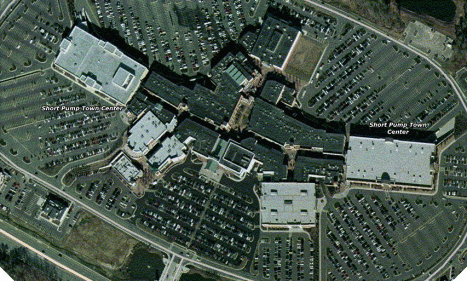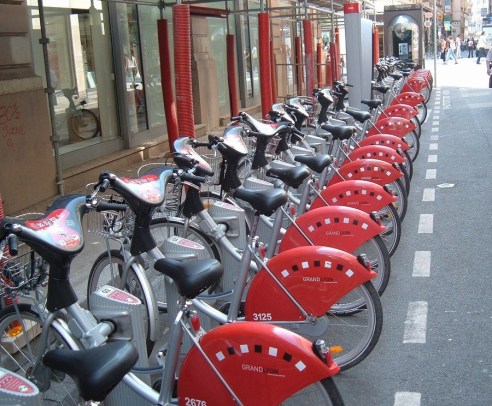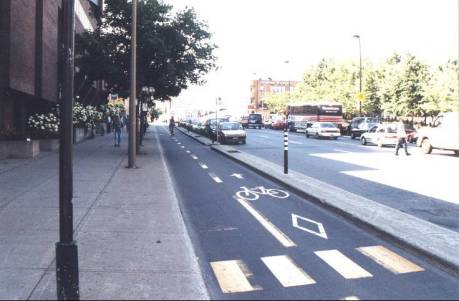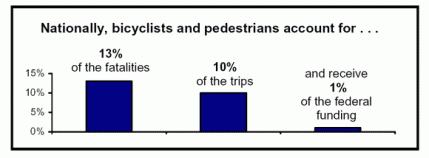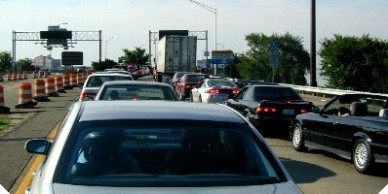The recent design charrette has provided a little controversy for our city and for engaged bloggers. Should downtown convert its street grid from one-way to two-way streets? Divergent views are already emerging.
Explaining and defending the charrette’s recommendation of a two-way street conversion downtown is Buttermilk & Molasses. John’s post “THE DOWNTOWN PLAN: ONE-WAY OR ANOTHER” ably presents the controversy and advocates for the conversion.
Representing concern over this proposed change is the Richmond Business & Commercial News blog in the post “Ending One-Way Streets in Richmond?” A local traffic engineer, Bear, joins the debate in the comments section with data and sound logic advocating for the status-quo.
The controversy has also made its way to Richmond City Watch’s forum, an on-line forum for all things Richmond, with a focus on architecture & urban planning.
Check out Bear’s posts here (covering similar ground) and the many responses in the forum’s Downtown Charrette discussion.
I’ve spent the afternoon researching the claims each side is making and trying to determine if there is a clear case to be made for either side. Most arguments on both sides of the local debate center on making downtown a safer and more inviting environment for non-motorists, a goal almost universally shared.
My view: there is no obvious choice here.
The smoking gun for my ambivalence is the Federal Highway Administration’s Pedestrian Safety Report on “One-Way/Two-Way Street Conversions,” which concludes that compelling reasons exist for both types of streets from a pedestrian safety perspective.
Reasons for converting to 2-way streets:
- Slower traffic speeds.
- Decrease “Vehicle Miles Traveled” by eliminating indirect routes (driving around the block to get to your destination).
- Increased access to businesses.
- Possibly: safer for pedestrians.
Reasons for maintaining 1-way streets:
- Conversion is very costly.
- 1- way streets allow for more cars, thereby decreasing congestion.
- Easier than 2-way streets to time stoplights (timed lights improve traffic flow and decrease idling (& therefore pollution)).
- Fewer turn prohibitions.
- More on-street parking.
- Possibly: safer for pedestrians.
A note of clarification: turns are often prohibited on heavily traveled 2-way streets to maintain traffic flow (think Hull St. in Manchester, or Boulevard during rush hour). On-street parking is sometimes lost as the extra lane used for parking is reclaimed for travel purposes. And both sides in this debate argue that their choice is the safest for pedestrians.
Unfortunately, most of the information I found about the pros and cons of converting streets was written by highly partisan organizations which were promoting ideological arguments for or against automobile-oriented development. These studies were less academic in nature and more akin to propaganda. I searched academic databases, government sites, and google. At any rate, here’s a rundown of studies I found helpful.
One of the better studies was published by the Transportation Research Board, “Downtown Streets: Are We Strangling Ourselves on One-Way Networks?” which advocates for 2-way streets. “This paper provides a comparison of one-way versus two-way street systems for downtowns and presents an evaluation methodology for considering two-way conversion.”
The study discusses Bear’s comment on the Business & Commercial News blog that “One-way streets eliminate conflict points” and argues the opposite. The heart of the issue is, in my own blunt rewording, from how many directions can pedestrians be hit? Bear and others argue that 1-way streets provide fewer “conflict points,” while the Transportation Research Board argues that 1-way street networks provide many more possible types of street intersections. Examples include a 1-way street intersecting with another 1-way street, a 1-way street intersecting with a 2-way street, and a 1-way street which becomes 2-way at an intersection (think Main & Cary sts. where they convert to 2-way). 1-way street networks increase the variety and kind of conflict points creating more confusion for pedestrians and motorists.
The highly technical article “A MICROSCOPIC SIMULATION STUDY OF TWO-WAY STREET NETWORK VERSUS ONE-WAY STREET NETWORK” argues that, “one of the inherent disadvantages with one-way street is that they force additional turning movements at the intersections caused by motorists who must travel “out-of-direction” to reach their destination. The additional turning movements for a one-way street network increase the occurrences of vehicular-pedestrian conflicts at any given intersection, and also result in a system-wide increase in vehicle mile of travel (VMT) as compared to a two-way street network.”
In other words, you have to turn more on a 1-way street network, and therefore have more chances of running over people.
I found both of these sources on Streetsblog.org, a NYC-focused blog with a helpful article arguing against converting streets to one-way in Brooklyn.
On the other side of the debate is the Center for the American Dream of Mobility and Homeownership’s paper “No Two Ways About It: One-Way Streets are better than Two-Way.” The most convincing evidence produced in this paper is that pedestrians were hit more frequently after streets were converted to 2-way in several downtowns in the US. I’d prefer to cite those studies directly rather than this obviously partisan article, but I could not track them down on-line. The references in this article contain a lot of garbage (highly ideological publications, newspapers, and studies more than 50 years old), but the empirical evidence cited about the number of accidents resulting from recent 2-way conversions is convincing.
I am personally biased towards 2-way streets. They put less emphasis on moving as many cars as possible, they slow traffic, and provide a more inviting atmosphere for pedestrians. However, I’m not sure that compelling enough evidence exists for their benefits in a downtown region to justify the expense required to do a full-scale conversion.
What I’d like to see is more empirical evidence for the claims of both sides, focusing on the many regions which have recently switched their downtown street networks. Denver, Raleigh, and Cambridge, MA, among many others, have recently done this. What’s their experience been? Has downtown experienced a resurgence? Have their been fewer or more pedestrian accidents?
The issue of pedestrian accidents is a salient one for Richmond. We have the dubious distinction of placing 2nd in large Metro areas with worsening pedestrian safety (Orlando’s number 1).
Richmond-Petersburg, VA MSA in 1994-95 scored a 41.4 on the “pedestrian danger index” and a 70.5 in 2002-03.
The danger index is a measure of the average yearly pedestrian fatalities per capita, adjusted for the number of walkers. In other words, a lot more people are getting run over by cars.
Of course, I doubt many of those accidents occurred downtown, likely they’re in Midlothian and Short Pump. But it seems like a discussion of improving pedestrian safety, downtown and around the rest of the metro area, is timely.
